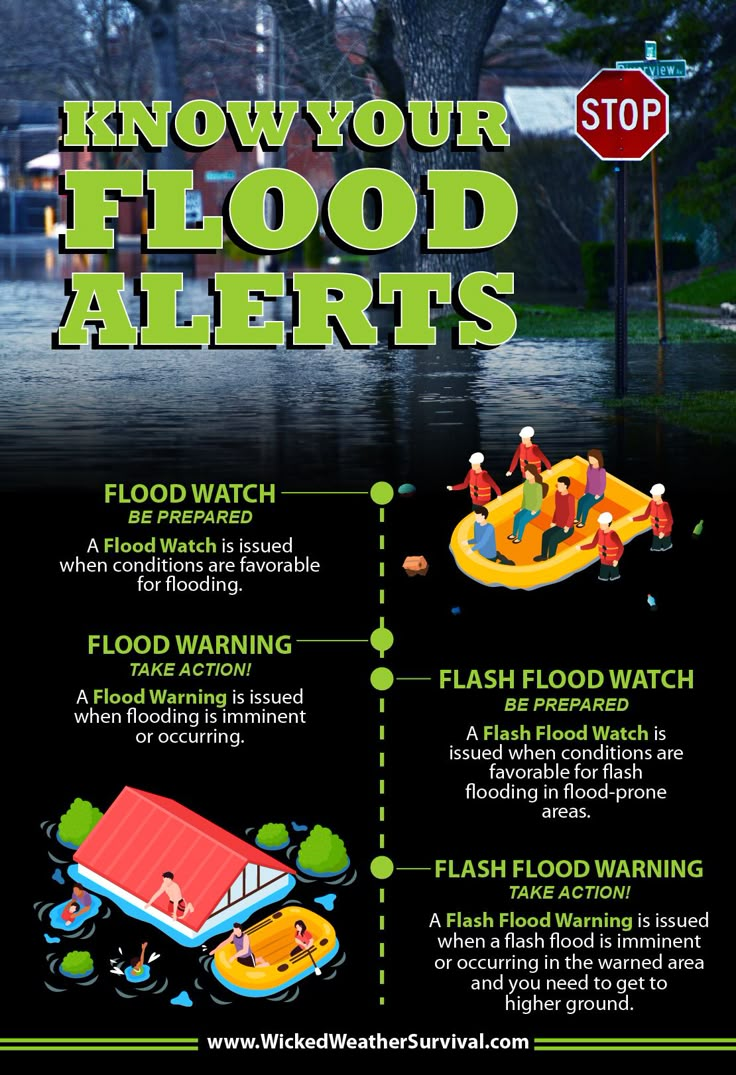Flash Flood Emergency: Recognizing The Signs And Taking Action

Table of Contents
Recognizing the Signs of an Impending Flash Flood Emergency
Recognizing the precursors to a flash flood emergency is crucial for your safety. Being aware of both weather patterns and environmental changes can give you precious time to react.
Weather Indicators:
Flash floods rarely announce themselves with ample warning. Often, they develop rapidly. Keep an eye out for these crucial weather indicators:
- Rapidly changing weather conditions: A sudden shift from sunny skies to dark, ominous clouds, often accompanied by strong winds, is a significant warning sign. This rapid change suggests a powerful weather system is moving in.
- Heavy rainfall: Intense, persistent rainfall, especially in a short period, can quickly overwhelm drainage systems, leading to rapid flooding. Pay close attention to rainfall intensity – if it feels like more than your local drainage can handle, that's a serious warning.
- Dark skies: Dark, often greenish-tinged skies are a hallmark of approaching severe weather, including flash floods. The darker the sky, the more intense the rainfall is likely to be.
- Unusual cloud formations: Certain cloud formations, like towering cumulonimbus clouds, are associated with heavy rainfall and potential flash floods. Learning to recognize these can be invaluable.
- Overflowing rivers/streams: If you see rivers and streams overflowing their banks, it's a clear sign that the ground is saturated, and flash flooding is imminent. Even a small creek can quickly become a raging torrent.
- Distant thunder: Hearing distant thunder can signal the approach of a thunderstorm, potentially bringing heavy rainfall and a high risk of flash flooding.
Environmental Signs:
Besides weather patterns, environmental changes can also indicate an impending flash flood. Pay attention to:
- Rapidly rising water levels in streams, creeks, and rivers: A sudden and noticeable increase in water levels in bodies of water is a critical warning sign. The faster the rise, the greater the danger.
- Increased water flow: Even without a significant rise in water level, a sudden increase in the speed of water flow in streams or rivers suggests heavy rainfall upstream and an increased risk of flash flooding downstream.
- Debris accumulation: An unusual amount of debris, like branches or leaves, being carried downstream indicates a surge in water flow and potential flooding.
- Changes in water color or clarity: Muddy or discolored water suggests increased sediment runoff from heavy rainfall, further indicating potential flooding.
Official Warnings & Alerts:
Relying solely on visual cues isn't enough; staying informed through official channels is essential.
- How to receive alerts: Sign up for weather alerts through reputable weather apps (like those from the National Weather Service or your local meteorological agency), enable emergency alerts on your phone, and monitor local news broadcasts.
- Understanding the different warning levels: A "flood watch" means conditions are favorable for flooding, while a "flood warning" means flooding is already occurring or is imminent. A warning requires immediate action. Pay close attention to the specific instructions in any alerts you receive.
Taking Action During a Flash Flood Emergency
Knowing what to do before, during, and after a flash flood is critical.
Immediate Actions:
When a flash flood warning is issued or you observe the warning signs, act immediately:
- Move to higher ground immediately: This is the most important step. Get to a safe, elevated area as quickly as possible. Do not wait until the water starts rising around you.
- Avoid driving through flooded areas: Never attempt to drive or walk through floodwaters. The depth and strength of the current are often deceptive and can sweep away vehicles and people. Even a few inches of water can cause serious damage to your car.
- Avoid walking or standing in floodwaters: Floodwaters can be contaminated with sewage, chemicals, and other dangerous substances. The water can also be electrically charged due to downed power lines, posing a significant electrocution risk.
- Contact emergency services: Call your local emergency services immediately if you or someone you know is in immediate danger. Provide your exact location and any other relevant information.
- Secure your property (if safe to do so): If it is safe to do so, move valuable items to higher ground and take steps to protect your home from flooding (if time allows).
Protecting Your Home & Property (Pre-Flood):
Proactive steps can significantly reduce your risk and the impact of a flash flood.
- Develop a family emergency plan: Establish a meeting point and evacuation routes. Discuss emergency procedures and responsibilities.
- Create a go-bag: Prepare a bag containing essential items like water, food, medications, important documents, flashlights, and extra batteries.
- Understand your flood risk: Know your local floodplains and identify potential hazards in your area.
- Consider flood insurance: Flood insurance can help cover costs associated with damage to your home and belongings.
Post-Flood Actions:
After the flash flood has subsided, post-flood safety and recovery are vital:
- Assess damage: Carefully inspect your property for damage. Do not enter areas where standing water is present.
- Contact insurance providers: If you have flood insurance, report the damage to your insurance provider as soon as possible.
- Be aware of potential hazards: Avoid downed power lines, contaminated water, and other potential dangers. Be aware that floodwaters can cause structural damage to buildings, making them unstable.
- Seek assistance if needed: Contact local authorities or emergency services if you need assistance with cleanup or recovery efforts.
Conclusion: Staying Safe During Flash Flood Emergencies
Flash floods are a serious threat, but with preparedness and awareness, you can significantly reduce your risk. Remember to pay close attention to weather forecasts and warnings, recognize the signs of impending flash floods, and take immediate action when necessary. Developing a comprehensive flash flood emergency plan, including a family evacuation plan and an emergency kit, is crucial for your safety and the safety of your loved ones. Stay informed about weather conditions, and don’t hesitate to heed official warnings. Visit the NOAA website ([link to NOAA website]) for more information on flash flood preparedness and safety. By taking these steps, you can significantly improve your chances of surviving a flash flood emergency and minimizing potential damage.

Featured Posts
-
 Understanding The Claire Williams And George Russell Situation
May 25, 2025
Understanding The Claire Williams And George Russell Situation
May 25, 2025 -
 Myrtle Beach Newspaper Celebrates 59 Sc Press Association Awards For Journalism
May 25, 2025
Myrtle Beach Newspaper Celebrates 59 Sc Press Association Awards For Journalism
May 25, 2025 -
 Atletico Madrid In 3 Maclik Durgunlugunun Ardindan Zafer
May 25, 2025
Atletico Madrid In 3 Maclik Durgunlugunun Ardindan Zafer
May 25, 2025 -
 Hsv Aufstieg Perfekt Der Weg Zurueck In Die Bundesliga
May 25, 2025
Hsv Aufstieg Perfekt Der Weg Zurueck In Die Bundesliga
May 25, 2025 -
 Ferrari Hot Wheels Mamma Mia A Look At The New Releases
May 25, 2025
Ferrari Hot Wheels Mamma Mia A Look At The New Releases
May 25, 2025
